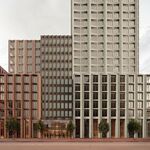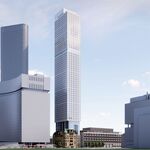greenleaf
Senior Member
Thanks for sharing all this s&m!
Sorry doady, I didn't mean to point out your quote to single you out for anything you did wrong. I just find the idea of density is good a common assumption on this forum and it was evident in how you said what you did. I think a simple test for is density good? Is how do the residents feel about their area. Are they saying "I love this place, this is the place I choose to live" or are they saying "get me the heck out of here, if I could move I would". I think dense areas are all over the map on this continuum. I still have a slight "density is good" bias but not as much as when I was younger. I experienced hyper density for myself on several trips to asia and I can say that walking down a noisy, polluted, traffic and pedestrian clogged street when it is 38 degrees out does wonders to temper your enthusiasm for density
Very cool indeed. I can't believe the level of detail in the census tract information, although some of the smaller numbers appear to be rounded to the nearest 5 (unless there are exactly 5 single male parent households with 2 kids in my census tract).
Apparently my East Danforth neighbourhood (Danforth/Milverton/Coxwell/Woodbine) has 2,792 residents, 1,078 occupied private dwellings, zero apartments over 5 stories, yet a population density of 7,589 p/sq2. That doesn't even include the two apartment buildings on Woodbine, technically a different census tract. I'd say that's pretty dense considering almost all buildings are freehold with 2-3 stories.
Parts of Miliken, Mississauga, and Brampton get to those kinds of densities (7000+ p/km2) in some lowrise census tracts too though. They're mostly small lot post-war suburbia.Yeah people forget that houses that are smaller and packed together closer can be much denser than post-war suburbs. 3-5 story early 1900's apartment buildings can be dense too. It's not just about height, much of Toronto is low or mid-rise but still fairly dense, and the Danforth is a good example.
I'm not familiar with all those areas, but I personally see that a lot of post-war suburbia has tall 60's-70's style apartments, which I'm assuming increases their density.
Another possibility is that some of those houses in the suburbs have many people living in them, more than one family multi-generational families for example.
These are pretty much all classic 90s/00s housing, maybe a bit earlier (70s/80s) for Scarborough and Markham.
As for your second point, I'm a little tempted to say "so what?"...
After all, if you look at the older neighbourhoods of Toronto, there's plenty of row houses with multiple units stacked vertically, including plenty of basement apartments. In terms of built sf/person, I don't think the examples I listed have less than older neighbourhoods of Toronto, more like the average suburban neighbourhood has more sf/person.
I would say the main difference is more driveway space in the recent suburbs (i.e. bigger front setback), but this comes at the cost of less backyard space (they also lack back alleys/back garages).
The older post-war suburbs typically have large lots and smaller houses than the newer ones, so they're less dense. The suburbs you're likely to see in Toronto are more of the older post-WWII variety, as opposed to what you'd see in Vaughan, Brampton or Milton.
Um, I have no real response to "so what?", I wasn't really trying to make any point, it was just a guess as to explain the density there.
My original point was just that houses that are smaller and closer together in smaller lots with smaller driveways, no garages and narrower roads seem like they would be more dense. To me, it seems like pre-war suburbia (streetcar suburbs like East York) would have those characteristics and post-war suburbia would be on bigger lots with garages with wider roads and big back yards & front yards.
I guess my assumptions are incorrect?






I would say the main difference is more driveway space in the recent suburbs (i.e. bigger front setback), but this comes at the cost of less backyard space (they also lack back alleys/back garages).




